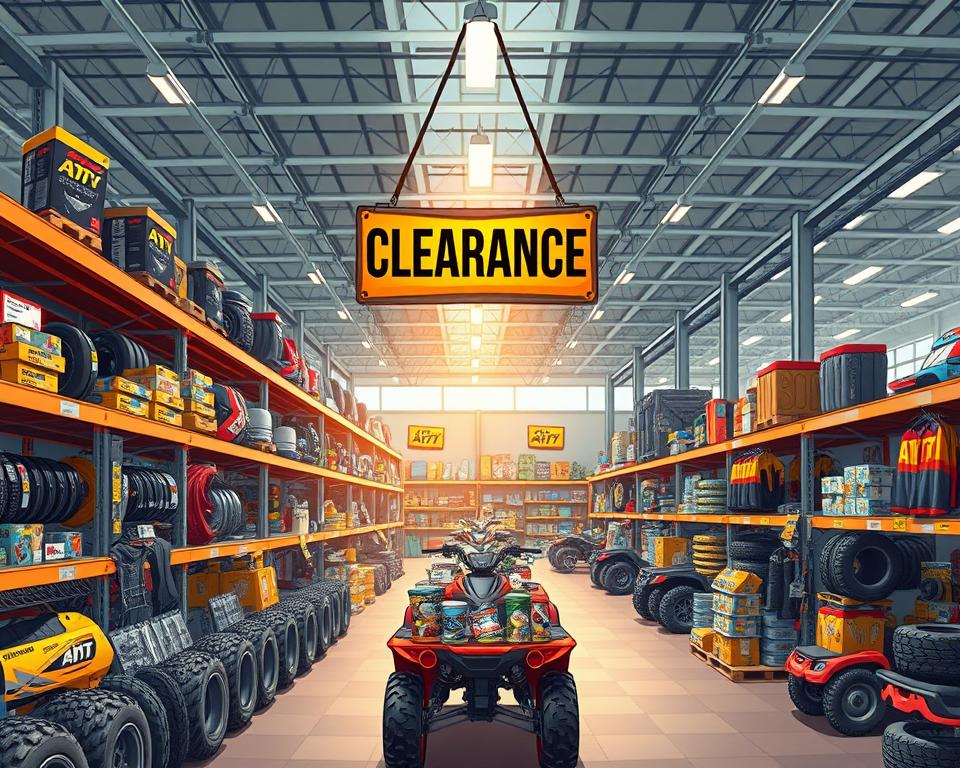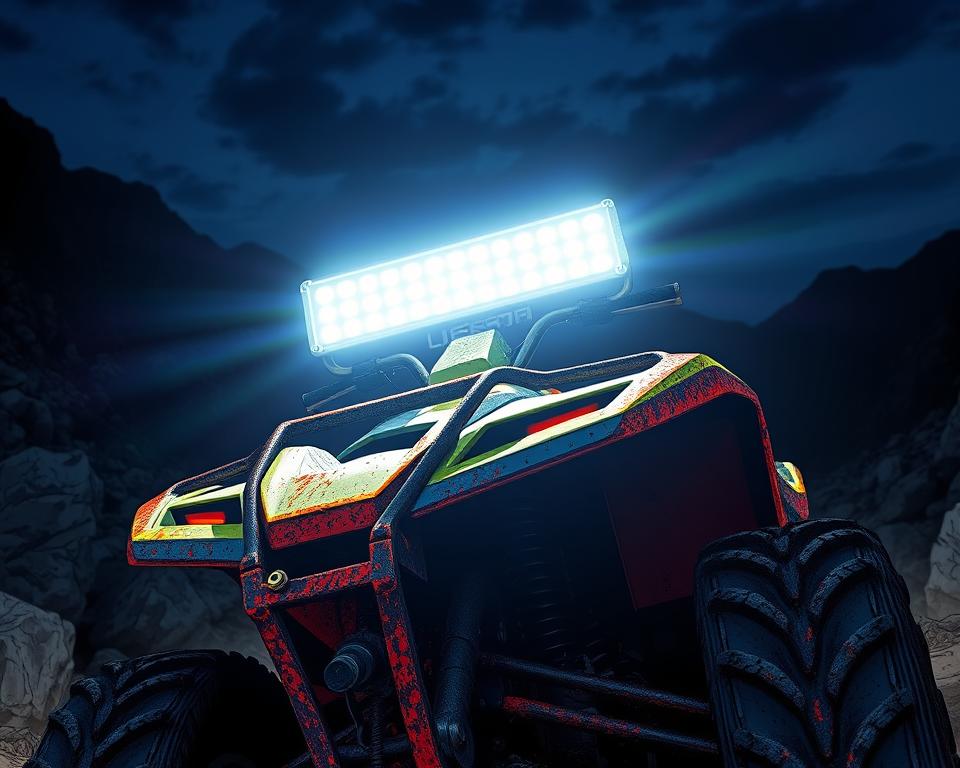Complete ATV Off-Road Safety Prep Guide
It’s interesting to note nearly about 450,000 ATV-related injuries are treated in U.S. emergency rooms each year? That startling statistic underscores why off-road safety and preparation are essential. Use this Essential ATV Off-Road Checklist to ensure every ride is safe and fun. Whether you’re tackling rocks or dunes, it’s all included. With the right safety gear and plow for Polaris sportsman essentials, you can minimize risks and boost your adventure.
Major Highlights
- Start with safety: follow this checklist for full prep.
- Your gear list is critical for staying protected off-road.
- Maintenance matters: check often, ride better.
- Stay fueled and hydrated for peak performance.
- Don’t wander: rely on trusty navigation tools.
- Be ready for unexpected weather changes to stay comfortable during your adventure.
- Trailside fixes? Have your toolkit and recovery gear ready.
Understanding the Importance of Safety Gear
When you ride off-road, safety must come first. ATVs deliver thrills—and risks. Proper gear guards you against mishaps. Being well-equipped ensures a safer ride and follows an ATV safety gear checklist.

Essential Protective Gear
Maximizing protection involves several key items:
- Helmets: Only DOT-certified lids will protect your skull.
- Eye Protection: Block dirt and grit with quality goggles.
- Gloves: Grip and guard your hands with sturdy gloves.
- Boots: Ankle-support boots are a must.
- Body Armor: Chest and back armor add vital protection.
- Neck Protection: Neck braces can help reduce the risk of spinal injuries.
Emergency Preparedness
Being ready for emergencies is critical. Your emergency bag could be your best friend. Key items to include are:
- First aid kit
- Multi-tool
- Tire repair kits
- Portable air compressors
- Emergency blankets
- Whistles
- Matches
ATV Equipment for Optimal Performance
Gear choices affect how well your ATV runs. Knowing the must-have ATV equipment ensures you’re ready for any journey. Use this maintenance checklist to keep your ride healthy.
Must-Have ATV Equipment
- Durable Tires: Terrain-specific tires keep you glued to the track.
- Storage Solutions: Mount racks or bags to carry your gear safely.
- Quality Fuel Tank: A high-quality fuel tank prevents leaks and ensures you have enough fuel for extended rides.
- Medical Kit: Stock your kit with bandages, antiseptic, and meds.
Regular Maintenance for Longevity
A maintenance schedule is your ATV’s best friend. Regular inspections should encompass:
- A clean air filter = a happy engine.
- Grease your chain often to avoid skip and wear.
- Test your brakes on every pre-ride check.
Stay on top of upkeep and your ATV will perform its best.
The Essential ATV Off-Road Checklist
Don’t skip your pre-ride safety scan. A quick check prevents major headaches. Every point matters—don’t rush. Spend a few minutes now for peace of mind later.
Pre-Ride Inspection Basics
Never ride without a quick systems check. Find and fix small problems before they grow. Key elements to check include:
- Tire pressure and tread condition
- Fluid levels such as oil and fuel
- Brakes and controls functionality
- Operational lights and horn
- Chain or driveshaft integrity
T-CLOC Inspection Method
Use T-CLOC for a thorough pre-ride check. Tires, Controls, Lights, Oil/Fuel, Chain—don’t miss a spot. This method ensures all critical areas are covered:
| Inspection Area | Checklist Items |
|---|---|
| Tires and Wheels | Check tire pressure, inspect tread depth, look for damage |
| Controls | Test brakes, throttle, and clutch for smooth operation |
| Lights | Ensure headlights, brake lights, and indicators are functioning |
| Oil and Fuel | Check oil level, inspect for leaks, and fill fuel tank |
| Chain/Driveshaft | Examine for wear, proper tension, and lubrication |
Check everything—ride with confidence. By checking these essential components, riders can avoid breakdowns.
Hydration and Nutrition for Long Rides
Don’t underestimate water and snacks on extended outings. Riders often underestimate their fluid needs, making it essential to plan ahead. Water packs help maintain endurance and alertness. Pack high-energy bites to keep you going.
Importance of Staying Hydrated
Dehydration leads to poor decisions and slow reflexes. A hydration pack with sip tube makes it easy. Consider using a hydration pack for convenience and to monitor water intake effectively.
High-Energy Snacks to Pack
Choosing the right snacks is vital for extended ATV rides. Pack portable, long-shelf treats. Some ideal choices include:
- Protein bars
- Nut mixes
- Dried fruits
- Beef jerky
These snacks provide a quick energy boost without hindering the riding experience. Variety prevents taste fatigue and keeps you powered.
Navigation Tools for Off-Roading Adventures
Lose fear of getting lost with the right nav gear. A dependable nav setup means you’ll always find your way.
Advanced GPS Systems
High-end GPS units guide you through the wild. Look for features like offline maps and a long-lasting battery. Garmin, TomTom, and others make GPS units built for bumps and dust.
Traditional Navigation Aids
Don’t ditch old-school compasses and maps. Maps won’t die when batteries do. Wind your own way with map and compass skills. Tech plus tools equals total navigation readiness.
Communication Equipment for Safety
When phones fail, two-way radios deliver. Clear comms keep your group coordinated. It gives riders peace of mind.
For seamless communication among group members, a quality two-way radio is highly recommended. Opt for radios rated for miles of reach. Get instant alerts about obstacles ahead. When choosing two-way radios, look for models with:
- Weatherproof construction to resist the elements
- Long battery life for extended trips without needing a recharge
- Channel selection for clear communication without interference
Adding ATV communication gear to your adventure prep is essential. These tools improve interaction among riders and boost safety. When reception is zero, your radio still works. With the right tools, your off-road trips will be smoother and more enjoyable.
Self-Rescue Gear for ATV Riders
Don’t be caught unprepared—pack rescue gear. Self-rescue gear for ATVs is key to handling challenges on your own. A well-prepared rider not only improves their experience but also boosts safety for all.
Winches and Recovery Kits
A winch can drag you out of any rut. Combine winch power with the right accessories. Recovery kits usually include:
- Tow straps
- D-rings
- Recovery boards
- Gloves
Practice recovery techniques before you need them. Be ready for anything the trail throws at you.
Trail Recovery Essentials
Pack these extras along with your winch. These include:
| Equipment | Purpose |
|---|---|
| Recovery Straps | Used for towing or pulling ATVs out of tight situations. |
| Shovel | Helps clear obstacles and dig out vehicles when stuck. |
| Traction Mats | Provides grip under tires in muddy or slick conditions. |
| Portable Air Compressor | Enables quick tire inflation after deflating for better traction. |
Don’t rely on luck—bring the right tools. Skills plus gear equal top-tier off-road safety.
Staying Adaptable: Preparing for Weather Changes
Weather variability is a major challenge in off-roading. Your comfort and safety depend on proper weather prep. Pack for every possible forecast.
Layer up, shed as needed. Begin with a moisture-wicking base layer to manage sweat. Fleece or wool gives you warmth on demand. Lastly, have a waterproof and wind-resistant outer shell. Stay dry and warm through all conditions.
Weather-Appropriate Clothing
- Rain Shells: A must-have for sudden downpours.
- Breathable Pants: Stay cool and dry with breathable pants.
- Sun Protection: Shield skin from sunburn with proper apparel.
- Insulated Gloves: Warm gloves maintain dexterity in chill.
Gear up for every climate challenge. Comfortable riders ride longer and safer.
Tools for On-Trail Repairs
Your toolkit can make or break your day on the trail. It’s vital to carry reliable ATV repair tools. Fix flats and loose bolts in minutes.
Must-Have Tools and Kits
No ride is complete without a toolkit. Pack only the essentials—no junk. Critical ATV repair tools might include:
- Tire irons for changing flat tires
- Pliers for gripping and cutting
- Wrenches for various sizes of bolts and nuts
- A multi-tool for versatility
- Spare items such as spark plugs and electrical wire
- Duct tape for quick fixes
Having these tools readily available boosts confidence and autonomy while exploring off-road trails.
Basic Emergency Supplies
In addition to essential tools, packing basic emergency supplies for ATV is vital. These supplies help ensure your safety in challenging situations:
- First aid kit for injuries
- Flashlight with extra batteries for night-time visibility
- Emergency whistle for signaling assistance
- Reflective triangles or flares to warn other riders
- Water and high-energy snacks for sustenance
Be ready for the unexpected. Your safety net on the trail.
As a Final Point
Well-planned rides are the best rides. Check off each item and pick reputable brands. This ensures you’re ready for any terrain.
With the right protective gear, navigation tools, and communication equipment, you’re set for safe riding. Plan smart to ride hard and safe. It lets you enjoy the thrill of off-road adventures without worry.
Stay ready, ride with care, and enjoy the unforgettable moments off-roading offers. Every leg of the trip matters. Use this guide for the best off-road experiences.
FAQ
What must an ATV safety checklist cover?
Start with a DOT helmet and sturdy goggles. Add gloves, boots, and torso protection. Neck braces help guard your spine. Remember to pack an emergency kit with a first aid kit and multi-tools for preparedness.
How can I ensure my ATV is well-maintained?
Keep filters clean and chain well-lubed. Don’t ignore brake checks. A consistent maintenance routine extends your machine’s life and keeps it ready for off-road adventures.
What does the T-CLOC inspection method entail?
T-CLOC is a five-step pre-ride routine. Cover Tires, Controls, Lights, Oil/Fuel, Chain in T-CLOC. This ensures your ATV’s critical components are in working order before hitting the trails.
How much water should I bring on an ATV trip?
Pack extra hydration for safety. Stay topped off to avoid dehydration. Use a hydration bladder for quick sips.
Must-have navigation tools for ATV trips?
For navigation, invest in an advanced GPS system designed for off-road use. Also carry a compass and laminated maps.
Role of radios on the trail?
Radios prevent isolation when cell fails. Areas with limited cell service highlight the need for reliable two-way radios.
What self-rescue gear should every ATV rider carry?
Be ready with winch and recovery essentials. This kit should include tow straps, D-rings, and recovery boards.
Tips for weather readiness off-road?
Layer up and down as conditions shift. Don’t get caught soaked—bring waterproofs. Wear sun-blocking fabrics and hats.
Which trailside tools matter most?
Carry essential wrenches, pliers, and irons. Have spares and tape for quick fixes.


